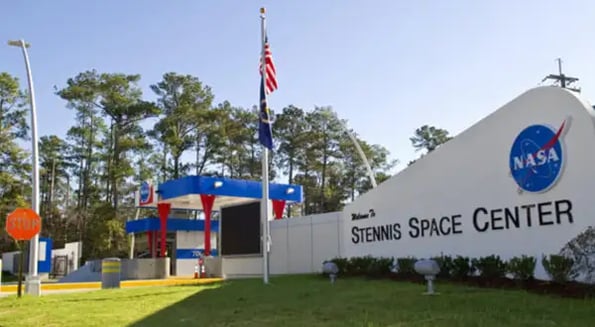Relativity Space, a 17-person startup that makes rockets with 3D printers, will take over NASA’s 20-year lease of the Stennis Space Center in Mississippi… at no cost.

According to a Bank of America Merrill Lynch forecast published last year, the space industry could hit $2.7T in the next three decades — and Relativity hopes to fill a growing demand for rockets that can be quickly produced at a lower price point.
Private space partnerships have taken off
Since the end of the space race, NASA — which receives only 0.5% of the federal budgetary pie today compared to 4.5% in 1966 — has had to knock on the private sector’s door to borrow some rocket fuel.
At first, only mega-contractors like Boeing or SpaceX had pockets deep enough to perform the expensive testing required to win big NASA contracts.
But as NASA continued to dole out multibillion-dollar contracts to private companies after dismantling their space shuttle program in 2011, investors began to smell an opportunity.
Shoot for the moon, land among the VCs
When the White House recently announced a plan to send astronauts back to the moon with no expansion of NASA’s budget for R&D, private investors were more than happy to fill the void: They pumped $3.9B into private space companies last year alone.
Although they know the skies will be crowded with competitors, the founders of Relativity, who defected from SpaceX and Blue Origin, are confident that their rocket — which is built in 60 days for $10m and carries more than a ton of cargo — won’t fail to launch.

